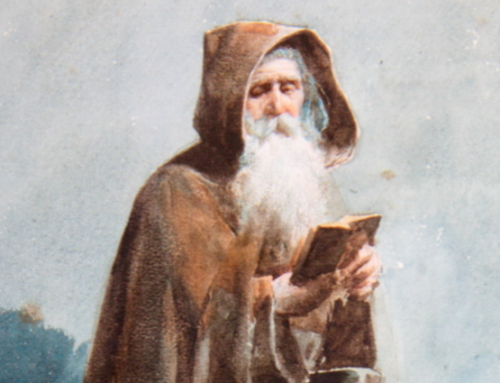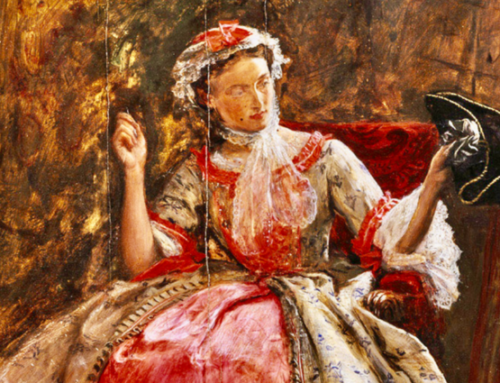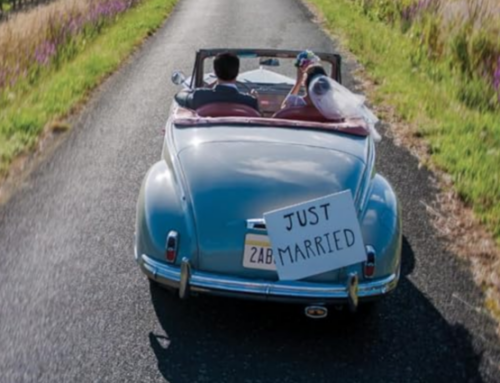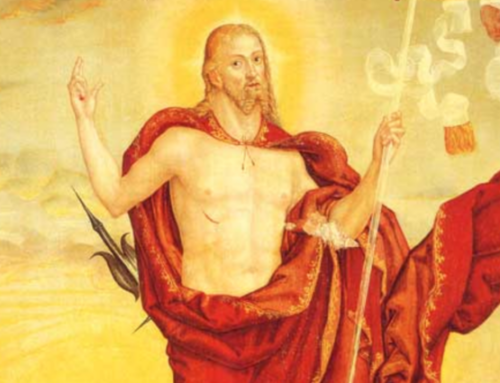Modern conservative fondness for the age of the suit is rooted in a sense of order, decency, and the natural. There is a profound irony in this, however: the conservative heroes who lived through that age were decidedly less enthusiastic about its fashions.
 Since at least the publication of The Young Fogey Handbook in 1985, conservative men of a certain stripe have looked back wistfully to men’s fashions that prevailed in some imagined past—the 1950s America of Mad Men, maybe, or (better still) 1920s Oxford. This reflex is certainly understandable. According to the second principle of conservatism as set down by the great Russell Kirk, “the conservative adheres to custom, convention, and continuity.” It is only natural to extend this fondness for convention to dress; Kirk certainly seems to have done so in his life. And many of his followers in the conservative movement have imitated him: only two years ago, First Things published an article in which G. Bruce Boyer lamented the decline of “[t]he suits and white dress shirts and discreet ties that most businessmen wore for a hundred years” and urged his readers to reject the tyranny of khakis and polo shirts and, once again, dress up. Anecdotally, I see the same impulse at work among my socially and sartorially conservative students at Christendom College: every semester or so, some earnest male student falls in love with the Inklings or Wodehouse or Brideshead; an efflorescence of tweed, waistcoats, and bowties is seldom far behind.
Since at least the publication of The Young Fogey Handbook in 1985, conservative men of a certain stripe have looked back wistfully to men’s fashions that prevailed in some imagined past—the 1950s America of Mad Men, maybe, or (better still) 1920s Oxford. This reflex is certainly understandable. According to the second principle of conservatism as set down by the great Russell Kirk, “the conservative adheres to custom, convention, and continuity.” It is only natural to extend this fondness for convention to dress; Kirk certainly seems to have done so in his life. And many of his followers in the conservative movement have imitated him: only two years ago, First Things published an article in which G. Bruce Boyer lamented the decline of “[t]he suits and white dress shirts and discreet ties that most businessmen wore for a hundred years” and urged his readers to reject the tyranny of khakis and polo shirts and, once again, dress up. Anecdotally, I see the same impulse at work among my socially and sartorially conservative students at Christendom College: every semester or so, some earnest male student falls in love with the Inklings or Wodehouse or Brideshead; an efflorescence of tweed, waistcoats, and bowties is seldom far behind.
There is a profound irony in all of this. Modern conservative fondness for the age of the suit is rooted in a sense of order, decency, and the natural. The conservative heroes who lived through that age, however, were decidedly less enthusiastic about its fashions. What conservatives of the 21st century see as a lost ideal, Christopher Dawson saw as the product of a cruel and decadent capitalism. As he writes in Progress and Religion:
When a culture has proved its real needs and organized its vital functions, every office becomes beautiful. So, too, with dress, the full Victorian panoply of top hat and frock coat undoubtedly expressed something essential in the 19th century culture, and hence it has spread with that culture all over the world as no fashion of clothing has ever done before. It is possible that our descendants will recognize in it a kind of grim Assyrian beauty, fit emblem of the ruthless and great age that created it; but, however that may be, it misses the direct and inevitable beauty that all clothing should have, because, like its parent-culture, it was out of touch with the life of nature and of human nature as well. (PR, 62).
Victorian menswear, then, is for Dawson the ugly and unnatural expression of a cruel and inhuman culture. And Dawson was hardly alone in his opinions. Tolkien quotes Dawson’s assessment with approval in “On Fairy Stories”; for him, the “full Victorian panoply” is part of the ugly, mechanistic modernity that Fantasy helps us escape. Tolkien’s hostility towards refined fashion is, perhaps, not too surprising: as Humphrey Carpenter notes, both Lewis and Tolkien practiced a deliberate indifference to fashion; Michael White claims that both friends “frowned on any form of stylish or fashionable dress.”
The same sort of critiques are present in comically exaggerated form in the life and works of G.K. Chesterton. Tolkien and Lewis may have been indifferent to fashion; Chesterton was simply negligent: Maisie Ward’s biography gives full account of Frances’s decades-long (and largely unsuccessful) attempts to make Chesterton consistently presentable, and a gentle mocking criticism of menswear runs through much of Chesterton’s fiction. When combined with his cutting social critique and penchant for medievalism, however, this mockery becomes a miniaturized version of his critique of the modern world as a whole; change in clothing becomes a synecdoche for social revolution. The most dramatic example of this occurs in The Return of Don Quixote. In this novel, the main characters stage a play about Richard I; at the end, one character—the librarian Michael Herne—refuses to change out of his medieval outlaw costume, and so starts a revolution. The whole matter begins innocently enough, with a gentle argument about the absurdity of modern fashion (“I want to know why anybody, of all the sacred race of man, ever wore a tie,” Herne demands). Later, Herne gives an extended argument for the superiority of medieval fashion to modern: the suit is useless, and forces its wearer to stoop and cringe; the tunic and cloak are useful, and make a man feel ten feet tall. On the whole, Herne argues, the medieval is more natural, more useful, more dignified—and then things get serious, as the whole order of England is upset. Other, lesser examples can be supplied: following the localist and quasi-medieval revolution in The Napoleon of Notting Hill, the businessmen of the neighborhood exchange their suits for robes—fantastically embroidered, of course, with the appropriate colors of their guild; the conclusion of The Man Who Was Thursday likewise sees the adoption of heraldic robes. For Chesterton, then, modern menswear is ill-suited to the natural and supernatural dignity of man, and so—in fiction, at least—it must give way.
But Chesterton’s comic praise of eccentricity is only half the story: he also gives an extended defense of centricity. In “The Conversion of an Anarchist,” Andrew Home’s strictly proper evening dress is contrasted with the lunatic extravagances of the Liberty Hall Club; Home’s conversion hinges on his rejection of private eccentricity in favor of the universal desires of the common man. An even more striking example is found in Tales of the Longbow. Here, the eccentrics are not communists and atheists but a club of Chestertonian eccentrics and paradox-peddlers. One figure stands out in the club: the stolid, conservative, and wholly respectable Colonel Crane, who defends the purely conventional man. As he has it, “I’ve always found that the man who could really be trusted to keep his word, and to fight, and to work for his family, was the man who did a war-dance before the moon where the moon was worshipped, and wore a nose-ring in his nose where nose-rings were worn.” The principle is applied later to the question of fashion—and, particularly, American fashion: for Crane, an American “is far more likely to be an honest man, a good husband and a good father, because he stinks of the rankest hickory patch in the Middle West, than if he were some fashionable New Yorker pretending to be an English aristocrat.” Deliberately or not, Chesterton provides an echo here of Newman’s great definition of the gentleman. “The true gentleman . . . carefully avoids whatever may cause a jar or a jolt in the minds of those with whom he is cast . . . his great concern being to make every one at ease and at home.” To draw attention to oneself or to stand out from the herd—to make others uncomfortable or on their guard—is antithetical to the spirit of the gentleman as expressed by Newman and Chesterton. An apt warning, perhaps, for my more conspicuously betweeded students.
But it is in the writings of C.S. Lewis that we find the most constant and forceful disdain for the fashions of the early 20th century, one rivalling (or maybe even surpassing) his hatred of school. Indeed, the question of clothing becomes something of a leitmotif in the Narnia series: English clothing is consistently derided as ugly and uncomfortable, and putting off the old garments in favor of new Narnian ones (“the kind that not only felt nice, but looked nice and smelt nice and made nice sounds when you moved as well,” as The Silver Chair has it) is a regular symbol for imaginative, moral, and spiritual renewal. Those who cling to the old clothes remain dead to Narnia: so Uncle Andrew, in his own “full Victorian panoply” of top-hat and frock-coat and the rest, remains dumb to the wonders of the freshly created Narnia, seeing only the opportunity for material exploitation. So too the pre-conversion Eustace sulks when he has to change out of his soaked English clothes and into dry Narnian gear; only when he is newly clothed by Aslan following his symbolic baptism does he fully embrace his life in Narnia. Conversely, changing back into English clothes—as at the end of Prince Caspian and The Silver Chair—is always a sign of the end of enchantment and a return to the ordinary.
But Lewis does not stop with individual renewal: like Chesterton before him, the rejection of modern clothing is used as an image for political change. In Prince Caspian, Telmarine oppression is signaled by the adoption of English fashion, and Aslan and the Bacchic retinue in his train rescue a young girl from a school “where a lot of Narnian girls, with . . . ugly tight collars round their necks and thick tickly stockings on their legs” suffer through propagandistic history lessons. When the school is liberated, Aslan’s party helps the rescued girl “take off some of the unnecessary and uncomfortable clothing that she was wearing.”[*] There is danger in this sort of revolution—Lucy remarks that the Bacchic romp would be quite unsafe without Aslan present—but, with that caveat, the revolt against the restrictive fashions of 1950s England is wholly in the direction of the good.
But perhaps the most striking example of Lewis’s sartorial critique comes in The Last Battle. King Tirian has just crashed through the stable door and finds himself in Paradise. The world is about to end, and we approach the great eucatastrophic consummation of the entire series. And at this moment, of all moments, Lewis chooses to digress on clothing. Tirian is shocked to find that he is wearing, not the battle-stained gear of a few moments ago, but fine clothing:
He was fresh and cool and clean, and dressed in such clothes as he would have worn for a great feast at Cair Paravel. (But in Narnia your good clothes were never your uncomfortable ones. They knew how to make things that felt beautiful as well as looking beautiful in Narnia: and there was no such thing as starch or flannel or elastic to be found from one end of the country to the other.)
A fine point, if perhaps not entirely suited to the context. But the move is mirrored at the climax of Lewis’s second most famous series, The Space Trilogy. As the world outside convulses in nigh-apocalyptic torment and the forces of evil are defeated by the powers of heaven, the heroes of That Hideous Strength, all the characters retire to don splendid festal robes. At least in this instance the intrusion of anti-modern clothing is anticipated earlier in the work: when the medieval Merlin arrives at St. Anne’s, he dismisses modern English professors as slaves unworthy of his attention. The mistake was understandable, as Dr. Ransom explains. “In his days, you see, men did not, except for necessity, go about in shapeless sacks of cloth, and drab was not a favorite color”; no sooner has Merlin arrived than Dr. Ransom abandons his suit—of which he is embarrassed—for a proper druidical robe.
The juxtaposition of robes and suits evidently captured Lewis’s imagination; it returns again in his scholarly prose. In Preface to Paradise Lost, Lewis makes an extended argument for the value of high ritual solemnity. If we destroy solemnity and high ritual, disaster follows:
Mr. Eliot may succeed in persuading the reading youth of England to have done with robes of purple and pavements of marble. But he will not therefore find them walking in sackcloth on floors of mud – he will only find them in smart, ugly suits walking on rubberoid.
This gives us, yet again, Lewis’s disdain for modern menswear and his affection for medieval ceremony. But by a happy accident, it also gives us something more: a near-perfect encapsulation of the disagreement between 20th- and 21st-century conservatives on the subject of men’s dress. Perhaps unaware of the passage just quoted (it occurs at the very end of the book), Mr. Boyer cites the Preface’s arguments on ceremony approvingly in order to advance his own argument for the suit. As he notes,
Occasions are shared public realities, rituals in which we recognize something other than private expression. C.S. Lewis thought about this idea of occasion in terms of solemnity. For Lewis, solemnity is a public joyous propriety in which we humbly give up our private selves to the ritual.
And this means, for Mr. Boyer, a return to the suit—and nothing could cast the difference between them in starker contrast. For Lewis, the “smart, ugly suit” of the 1930s and 40s is a social disaster, a plunge to the world “Mordred.” For Mr. Boyer and many other modern conservatives, that same suit becomes a lost paradise of decency and ceremony.
What can we learn from all of this? In strictly practical terms, we learn almost nothing at all. No part of the preceding argument gives clear guidance on how men should dress in the 21st century, and nothing suggests that Mr. Boyer’s “Great Casualization” was anything other than a cultural catastrophe. It may well be that modern menswear is slovenly, disordered, and undignified—but then, on the other hand, it might not be. If we are to attempt an answer to the question, the principled witness of Dawson, Lewis, and company is invaluable. They show us how a cultural critique can be rooted in a robust understanding of human nature—and the consequences when such a nature-based critique is ignored. After all, the arguments of Chesterton, Lewis, and the rest went largely unheeded until they returned, in monstrously exaggerated form, in the social revolutions of the late 1960s and early 1970s. As in Prince Caspian, Nature aggrieved can become Nature avenged with startling speed—but our world lacks the presence of Aslan to restrain the revolt. If we are to avoid the excesses inherent to social revolution, and if we are to restore order, conservatives need more than a simple nostalgic appeal to convention. Kirk’s second law is, on its own, insufficient: we must begin with his first principle and grapple with constant human nature and eternal moral truths. And this is a lesson that extends far beyond fashion.
The Imaginative Conservative applies the principle of appreciation to the discussion of culture and politics—we approach dialogue with magnanimity rather than with mere civility. Will you help us remain a refreshing oasis in the increasingly contentious arena of modern discourse? Please consider donating now.
Notes:
[1] Prince Caspian, p. 408.
The featured image is “Portrait of a Young Man” (1853) by Richard Dadd (1817-1886), courtesy of Wikimedia Commons.







The Victorian gentleman’s suit is not the (relatively comfortable and unthreatening) suit of the 20th century, which almost always looks good on a man for more formal occasions. If you look at the best portraits of Chesterton and Tolkien, you will see them dressed even so, and looking none the less dissheveled for all that.
Lewis and the others were all dreamy medievalists. Now, I happen to like that very much, but the only place where we will see medieval vesture consistently used is on Roman Catholic clergy who wear Gothic vestments. We will not be going back to long brocaded robes with cinctures any time soon. The practical question, then, is how to dress modestly, elegantly, and appropriately here and now.
In old black and white photographs one can see how the hard-working peasants of Europe and America used to keep their one best outfit for the Lord’s Day. This is the very least we can do today, even if we don’t need to dress up for white-collar work as much as our parents’ generation had to do. When I attend the local Latin Mass, it impresses me to see how well the men and women dress — not expensively, but neatly and on a higher level than our society makes room for. There is no rule that says they must, but the custom holds us together and gives a standard.
We should utilize the resources we have rather than undermining them with nothing to put in their place. For this reason, I rejoice to see tweed, vests, pipes, and the whole nine yards among undergraduates and grad school guys, as long as they do it socially and sociably, that is, in company with others and not as a way to stick out flamboyantly.